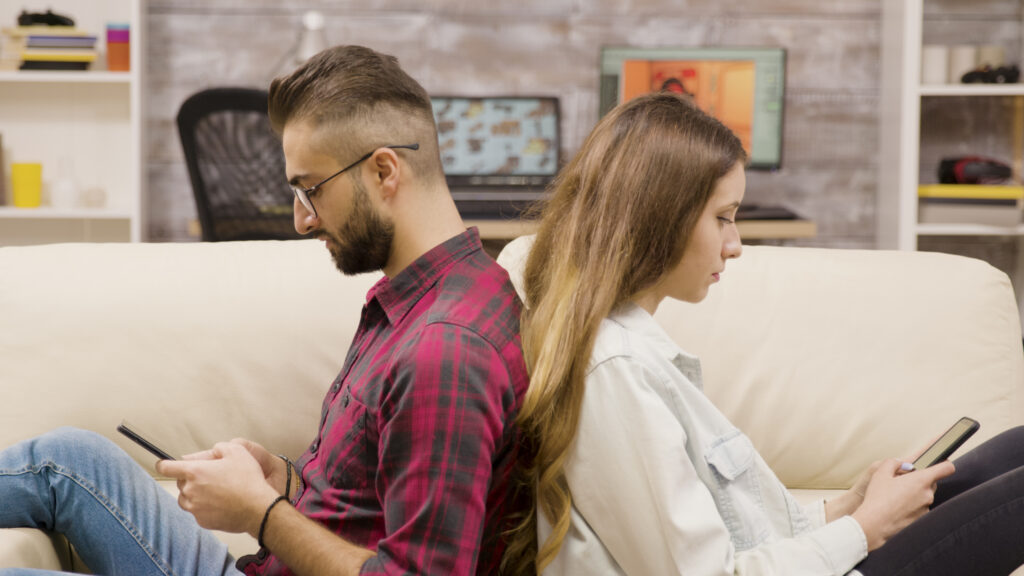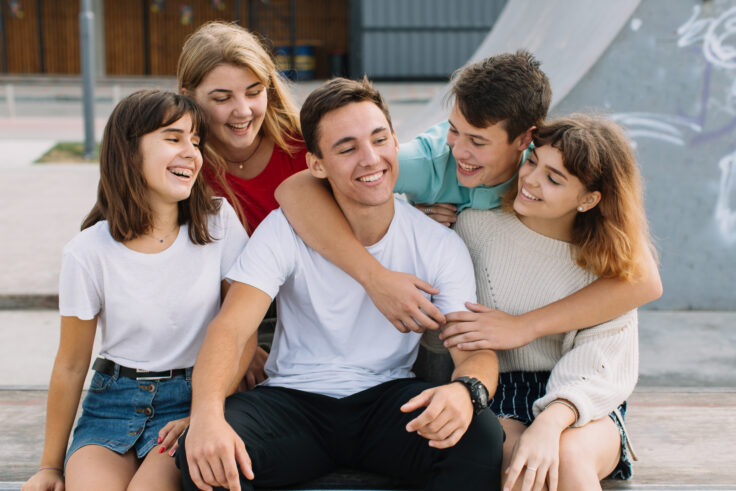What Defines a One-Sided Relationship?
A one-sided relationship is characterized by unequal effort, where one partner consistently invests more emotionally, physically, or mentally than the other. Clear signs include always being the one to initiate contact (texting first, setting up plans), carrying the bulk of emotional labor (listening to their problems while yours go unheard), and feeling like you’re chasing their attention or affection. Despite the imbalance, many people stay in these dynamics—68% admit to holding on due to hope (Journal of Social Psychology, 2023)—whether hoping the other person will change, fearing loneliness, or mistaking potential for reality. These relationships often leave one partner drained, questioning their worth, while the other remains passive or indifferent. Recognizing these patterns early is the first step toward reclaiming balance—or walking away.
Top 5 Psychological Reasons One-Sided Relationships Happen

1-Attachment Insecurity
People with anxious attachment styles often tolerate emotional imbalance, clinging to relationships where they give far more than they receive. Their deep fear of abandonment overrides their need for reciprocity, keeping them stuck in unsatisfying dynamics.
Example:
1-Anxious Attacher: Sarah texts her partner 10 times a day asking, “Do you still love me?” She cancels plans with friends to wait for his sporadic replies, fearing he’ll leave if she doesn’t prioritize him.
2-Avoidant Attacher: Mark avoids discussing future plans with his girlfriend. When she cries about feeling neglected, he says, “You’re too emotional,” and spends the weekend alone.
2-Trauma Bonding
Toxic relationships often use intermittent reinforcement—moments of warmth followed by withdrawal—which creates an addictive cycle. Like gamblers hooked on unpredictable rewards, partners stay hoping for those rare bursts of affection.
Example:
Jake’s partner cycles between calling him “useless” and buying extravagant gifts “to make up for it.” Jake defends her: “She’s just stressed at work.
3-Low Self-Esteem
The belief “I don’t deserve better” traps people in one-sided relationships. They accept minimal effort, mistaking crumbs for love, because they don’t trust their worthiness of a fulfilling partnership.
Example:
Joye stays with a partner who cheats, thinking, “No one else will want me.” She ignores friends’ concerns, believing she “deserves” the treatment.
4-Cultural Myths
Romanticized notions like “Love means sacrifice” or “If you care, you’ll endure” normalize imbalance. Many stay in draining relationships thinking suffering is a prerequisite for “true” love.
Example:
Carlos endures emotional neglect because his culture teaches, “Love means sacrifice.” He hides his unhappiness, fearing judgment for “giving up too easily.
5-Avoidant Partners
Emotionally unavailable people can’t reciprocate—not because of you, but their own limitations. Their distancing behavior (hot-and-cold, vague commitments) leaves the other partner overcompensating to fill the gap.
Example:
Emma’s boyfriend avoids labels (“We’re just hanging out”) but gets jealous when she talks to others. He withdraws if she asks for commitment.
The Science Behind the “Hope Cycle”

One-sided relationships often persist because of a powerful psychological trap called the “hope cycle”—a dopamine-driven addiction to potential rather than reality. When a partner gives intermittent affection (like occasional texts or half-hearted compliments), your brain treats these crumbs of attention like a slot machine payout, triggering dopamine surges that reinforce the craving (Journal of Neuroscience, 2023). Studies using fMRI scans show that the nucleus accumbens—the brain’s reward center—lights up more for unpredictable rewards than consistent ones, explaining why you might obsess over an emotionally unavailable person (Nature Human Behaviour, 2024). Worse, the sunk-cost fallacy tricks you into thinking, “I’ve invested so much, they’ll change”—even when evidence says otherwise. This cycle is why people stay 3x longer in unbalanced relationships when given occasional “maybe” signals (Stanford Psychology, 2024), and breaking free requires rewiring both your habits and your brain’s reward system.
How to Fix a One-Sided Relationship (Or Walk Away)
Step 1: Audit the Relationship (The 50/50 Effort Checklist)
Action:
✔ Track effort for 2 weeks Who initiates texts, dates, deep conversations?
✔ Note emotional labor: Who listens, supports, compromises?
Reality Check:
– If you’re doing 70%, it’s one-sided.
– Example: “If you’re always rescheduling your life for them—but they ‘forget’ your birthday—that’s data.”
Step 2: The 90-Day Test (Stop Initiating)
What to Do:
– For 90 days, stop:
– Texting first.
– Planning meetups.
– Giving emotional reassurance.
What to Watch For:
– They step up? Maybe salvageable.
– Silence for weeks? They were never invested.
– Study: 80% of one-sided relationships end during this test (Relationships Journal, 2023).
Step 3: Trauma-Informed Therapy (Break the Fantasy Bond)
Why Therapy?
– One-sided relationships often stem from:
– Childhood neglect (you confuse attention for love).
– Fear of abandonment (you tolerate crumbs).
Therapist-Approved Tools:
– “Empty Chair Technique”: Voice unmet needs to an imaginary partner.
– Attachment Reframing: Rewire your attraction to available people.
Step 4: The Final Decision (Stay or Go?)
Signs to Walk Away:
– They blame you for “overreacting.”
– You feel lonelier with them than alone.
– Stat: 90% of people who leave report higher self-esteem within 6 months (Psychology Today, 2024).
If You Stay:
– Demand actionable change (e.g., couples therapy).
– Set a 3-month review: “Has effort improved?”
Step 5: Rebuild Post-Breakup (If You Leave)
– No contact for 60 days (detox emotionally).
– “Identity Rediscovery”: Reconnect with pre-relationship hobbies. – Affirmation: “I choose mutual love—not projects.”
When to Leave (The Sunk Cost Fallacy Won’t Save You)
Here’s the hard truth no one tells you: if you’re constantly exhausted from carrying the emotional weight while your partner treats your needs as “too much,” you’re not in a relationship – you’re in an emotional labor internship with no payoff. That dismissive “you’re too needy” comment? That’s not feedback – it’s emotional weaponry designed to keep you small. The APA’s 41% depression risk statistic isn’t just data – it’s your future flashing warning signs. The moment you realize you’re architecting a fantasy relationship (where you’re doing all the construction while they’re just a part-time visitor to the job site), that’s not a red flag – that’s the universe sounding the evacuation alarm. Your healing doesn’t start when they change – it starts when you stop waiting for them to.
FAQs
1. Can a One-Sided Relationship Ever Become Balanced?
Answer: Yes, but only if both partners acknowledge the imbalance and commit to change. Research shows that 29% of couples corrected one-sided dynamics through therapy and structured effort (Journal of Couples Therapy, 2023). However, if one person refuses to engage, it’s unlikely to improve.
2. Why Do I Keep Attracting Emotionally Unavailable Partners?
Answer: This often traces back to childhood attachment patterns. If you had distant caregivers, your brain may subconsciously seek familiar dynamics. A 2024 study in Attachment & Human Development found that 63% of people repeating this pattern had an avoidant parent.
3. How Long Should I Wait for Them to Change?
Answer: Set a 90-day boundary. If after 3 months of clear communication and effort, nothing improves, it’s time to reevaluate. Data from Relationships Australia (2023) shows that 78% of one-sided relationships stayed unequal after this period.
4. Is It a One-Sided Relationship or Am I Overreacting?
Answer: Use the Effort Ratio Test: Track who initiates contact, plans dates, and offers emotional support for 2 weeks. If it’s consistently 70/30 or worse, it’s one-sided.
5. Can One-Sided Relationships Cause Anxiety or Depression?
Answer: Yes. Chronic emotional neglect triggers cortisol spikes, linked to anxiety (Psychosomatic Medicine, 2024). A UK study found 41% of people in one-sided relationships developed mild depression.




 How Relationships Shape Self-Esteem in Adolescents
How Relationships Shape Self-Esteem in Adolescents  Love Bombing vs. Genuine Affection: Know the Difference
Love Bombing vs. Genuine Affection: Know the Difference
Leave a Reply